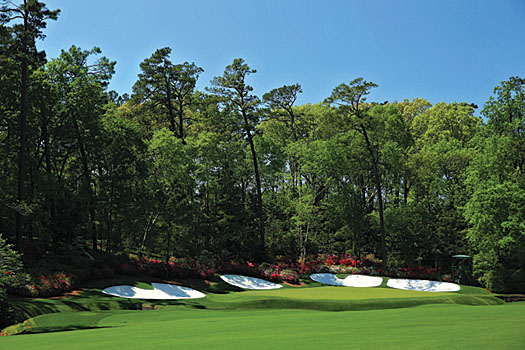
Eighty years on and we live in very different world.
Today our golf courses are riddled with the very features that Dr Mackenzie opposed all those years ago. In particular one such feature - the bunker - has been used at mass with the result being that so many of our golf landscapes are dominated by sand. Golden Age Golf Architect Albert Tillinghast coined the term “Bunkeritis” which he described as “the mad desire to have men groping around eighteen holes in sand, straining their glazed and agonizing eyes for a bit of fairway” - and how true that rings today.
Don’t get me wrong: the design for bunkering a golf course is tremendously important. Only I believe this exercise needs to be tempered, sensible and in balance with the landscape. In fact I would go as far as saying that many golf courses would be equally interesting with half the number of bunkers in play. This is the case for Laguna Phuket in Thailand, a golf course I am currently redesigning. At Laguna Phuket we have reduced the bunker numbers by half – instead we have focused on existing ground contours and features for inspiration and interest. Together this has helped considerably reduce construction and maintenance costs whilst allowing us the opportunity to enhance the golf in a much more sustainable fashion.
Bunker construction and maintenance can be an expensive endeavor, particularly if the golf course has not been laid out over natural sand. The cost of bunker lining, drainage and sand would scare anyone, so it’s important we build and position our bunkers such that they have the greatest impact on play. As if to justify his work at Augusta, Dr Mackenzie continued in his important tome, The Spirit of St Andrews, “The moral is few bunkers placed in interesting positions” - and one would find it hard to argue this today particularly in the economic climate we live in.
Bunkers are absolutely an integral part of the game, so it’s hard to fathom why so many golf courses are riddled with them - particularly in out of play areas or to the sides of the fairways where they have little effect. Almost always these bunkers are positioned according to some pattern making the entire scene look very unnatural. Even worse is the idea of bunkering for art’s sake, which has become a popular art. It’s my experience that the best golf courses maximize the need for a lot of bunkers by having them positioned where they will dictate the play.
Pages
Click here to see the published article.











